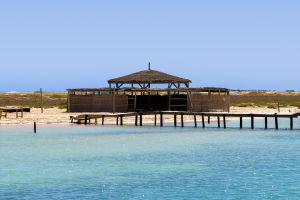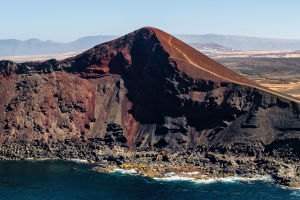Hello, Lykkers! The Indian Ocean is not just a geographical marvel but a spectacle of natural beauty and human history.
Whether you’re drawn to its turquoise waters, diverse marine life, or historic trade routes, this ocean offers unparalleled views and cultural treasures. Here’s everything you need to know about this mesmerizing expanse of water.
Geographical Grandeur Of The Indian Ocean
The Indian Ocean spans approximately 70 million square kilometers, making it the third-largest ocean on Earth. It is bordered by Africa to the west, Asia to the north, Australia to the east, and the Southern Ocean to the south. Its warm waters are home to iconic islands like the Maldives, Seychelles, and Madagascar, which boast vibrant coral reefs and pristine beaches.
Indian Ocean - How Big Is Indian Ocean Actually?
Video by Start Thinking.
Rich Marine Life And Ecosystems
The Indian Ocean's ecosystems are a testament to nature’s creativity. From the largest reptile, the leatherback turtle, to majestic creatures like whales, dolphins, and tiger sharks, this ocean is teeming with life. Its coral reefs are among the richest in biodiversity, supporting countless species of fish and marine plants.
Climate: The Power Of Monsoons
Monsoons dominate the Indian Ocean's climate, creating distinct seasonal patterns. These winds bring life-giving rains to South Asia during summer and create drier conditions in winter. The warm waters of the Indian Ocean also play a significant role in regulating global weather patterns, making it a critical component of Earth's climate system.
Historical Significance And Trade
The Indian Ocean has been a vital trade route for centuries. It served as a hub for the exchange of spices, textiles, and precious metals between Asia, Africa, and Europe. Even today, it remains essential for global commerce, connecting some of the busiest shipping lanes in the world.
Tourism And Cultural Gems
Tourists flock to the Indian Ocean's islands for their stunning beaches and luxury resorts. The Maldives and Seychelles are world-renowned for their clear waters, underwater diving experiences, and romantic settings. These islands are perfect for anyone looking to escape the mundane and immerse themselves in paradise.
Challenges: Conservation And Sustainability
While the Indian Ocean is a source of beauty and sustenance, it faces threats like overfishing, pollution, and climate change. Plastic pollution and oil spills pose significant risks to marine biodiversity, and efforts are underway to protect this vital resource for future generations.
A Canvas Of Serenity
The Indian Ocean isn't just an ocean; it's an experience—a soothing stretch of blue that whispers tales of adventure, resilience, and wonder. Its beauty lies not only in its vastness but also in the life it supports and the cultures it connects.
Conclusion
The Indian Ocean is more than just a geographical entity; it is a lifeline that connects cultures, supports diverse ecosystems, and inspires awe. Its tranquil waters, rich history, and ecological significance make it a source of wonder for travelers, historians, and conservationists alike. Whether you're exploring its breathtaking islands or delving into its role in shaping civilizations, the Indian Ocean offers an endless array of stories waiting to be discovered. Protecting this natural marvel ensures that its beauty and legacy endure for generations to come.
Thank you, dear Lykkers, for exploring this incredible journey with us!


